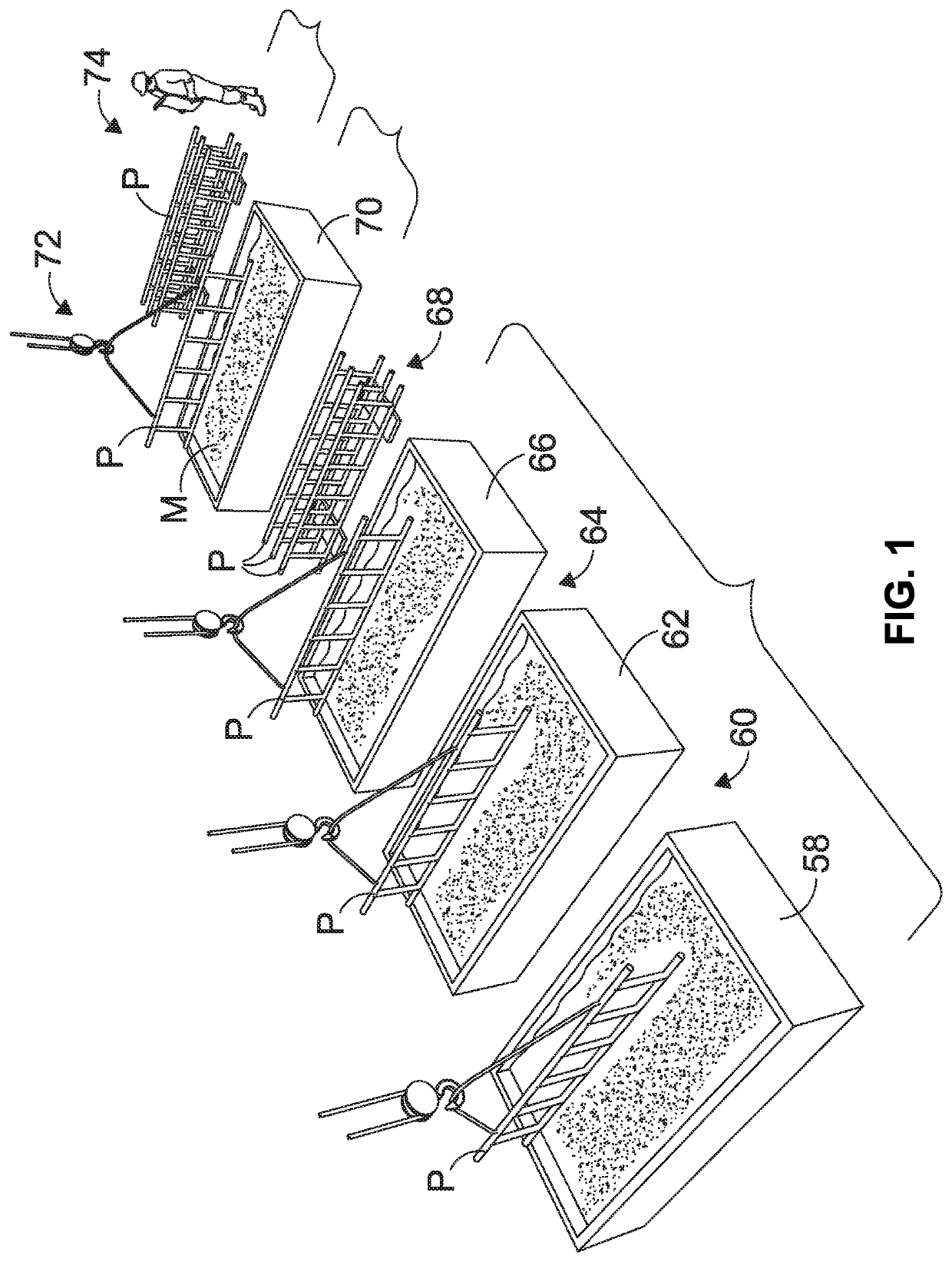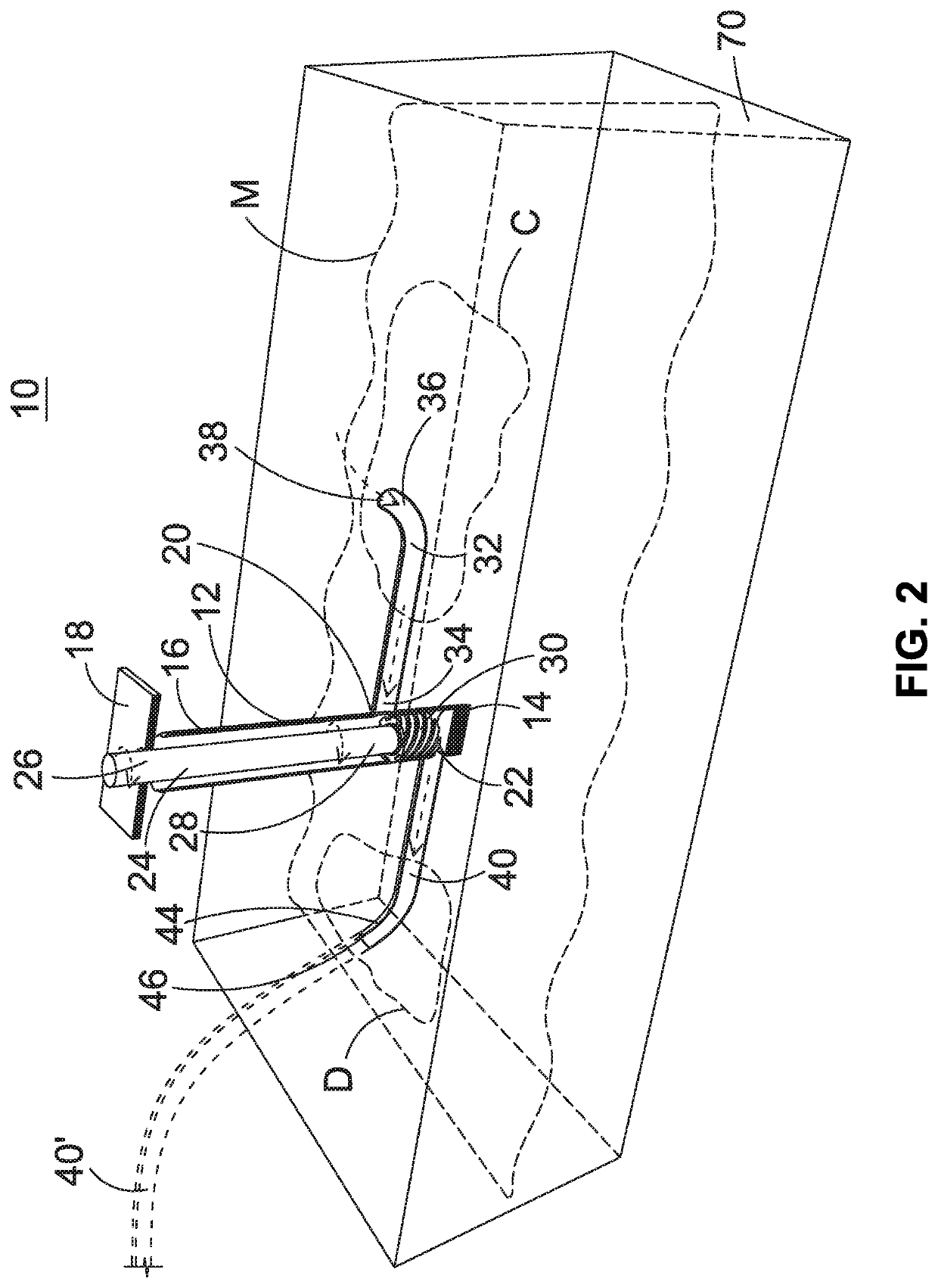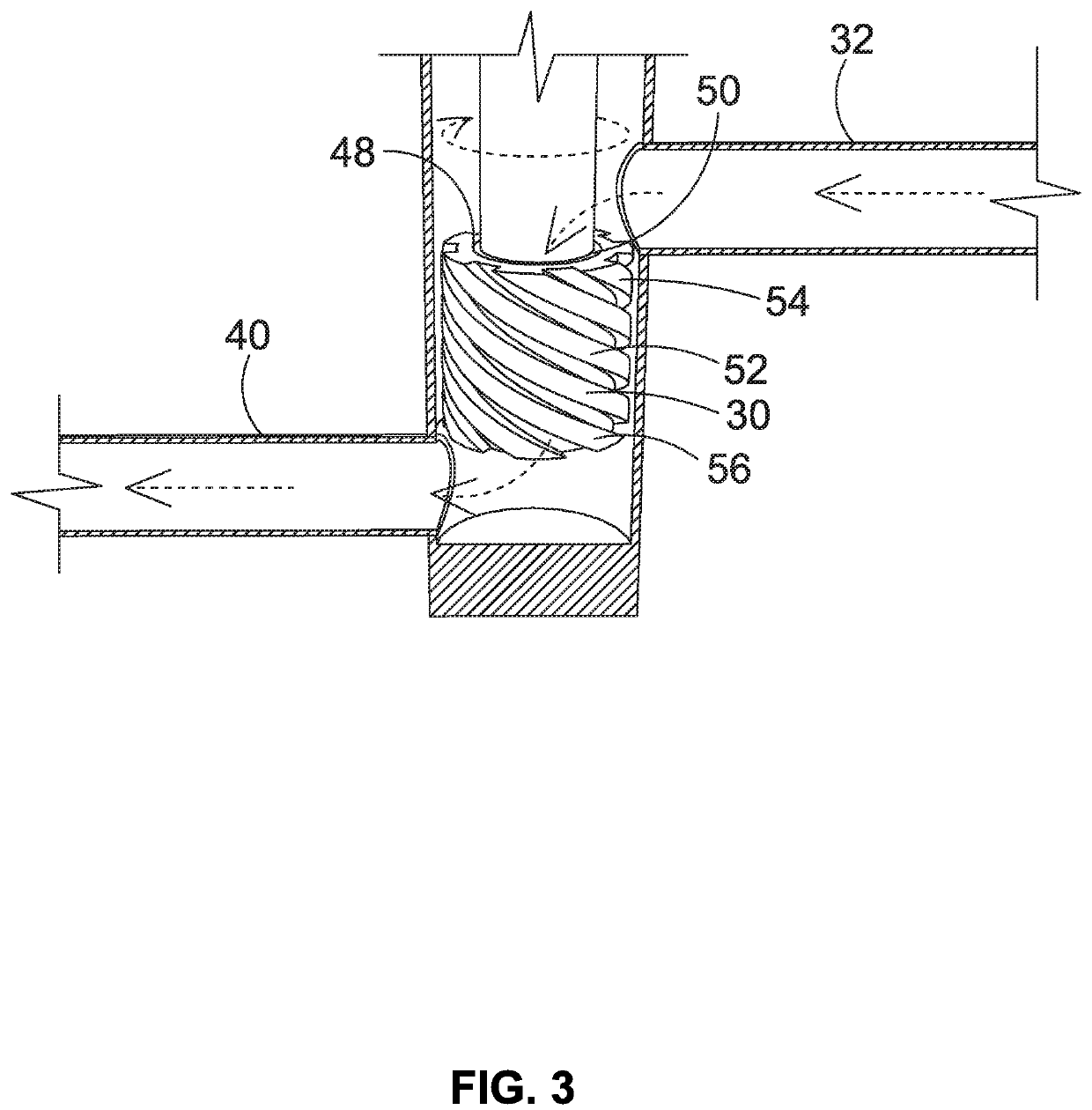Tube pump for removing dross during galvanizing
a tube pump and dross technology, which is applied in the direction of liquid fuel engines, machines/engines, mechanical equipment, etc., can solve the problems of reducing the strength of the dross, so as to reduce the defect, reduce the cost, and reduce the effect of corrosion
- Summary
- Abstract
- Description
- Claims
- Application Information
AI Technical Summary
Benefits of technology
Problems solved by technology
Method used
Image
Examples
Embodiment Construction
[0027]A tube pump 10 is suitable for use in removing dross during galvanizing and includes a tube 1212 comprised of refractory having a closed off lower end portion 14 and an open upper end portion 16. The lower end portion 14 of the tube 12 is adapted to be submerged in a bath of molten metal M. The galvanizing bath and the other baths are contained by enclosures, for example, the galvanizing bath is surrounded by refractory brick as known in the art. Support structure 18 is disposed outside of the molten metal bath for securing the upper end portion of the tube 12. The tube includes an inlet opening and an outlet opening (shown by 20, 22 in either upper or lower position). The position of the inlet and outlet openings can be reversed. A motor (not shown) is mounted to the support structure and includes a drive shaft (not shown). A pump shaft 24 is comprised of refractory material having upper and lower end portions 26, 28, respectively. The upper end portion 26 of the pump shaft 2...
PUM
| Property | Measurement | Unit |
|---|---|---|
| shape | aaaaa | aaaaa |
| strength | aaaaa | aaaaa |
| corrosion | aaaaa | aaaaa |
Abstract
Description
Claims
Application Information
 Login to View More
Login to View More - R&D
- Intellectual Property
- Life Sciences
- Materials
- Tech Scout
- Unparalleled Data Quality
- Higher Quality Content
- 60% Fewer Hallucinations
Browse by: Latest US Patents, China's latest patents, Technical Efficacy Thesaurus, Application Domain, Technology Topic, Popular Technical Reports.
© 2025 PatSnap. All rights reserved.Legal|Privacy policy|Modern Slavery Act Transparency Statement|Sitemap|About US| Contact US: help@patsnap.com



